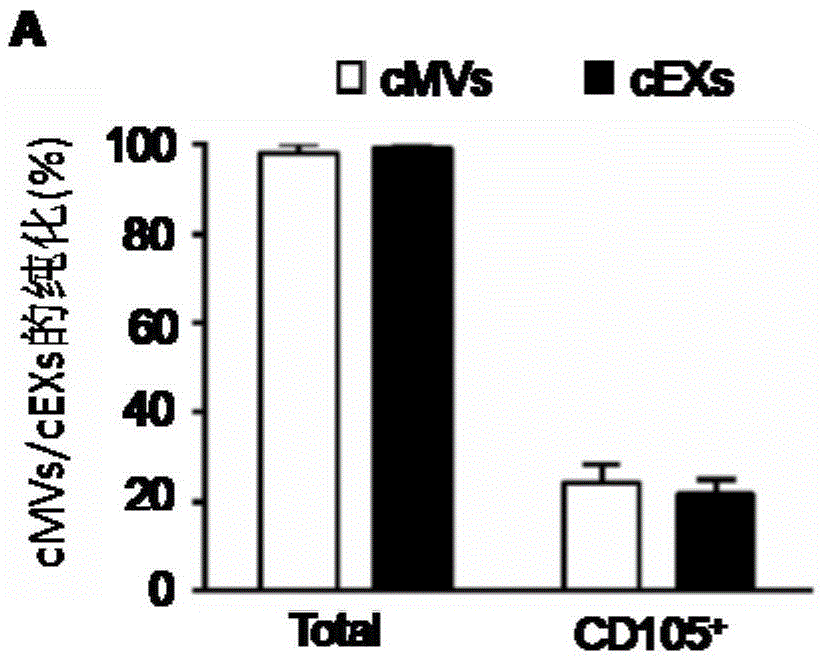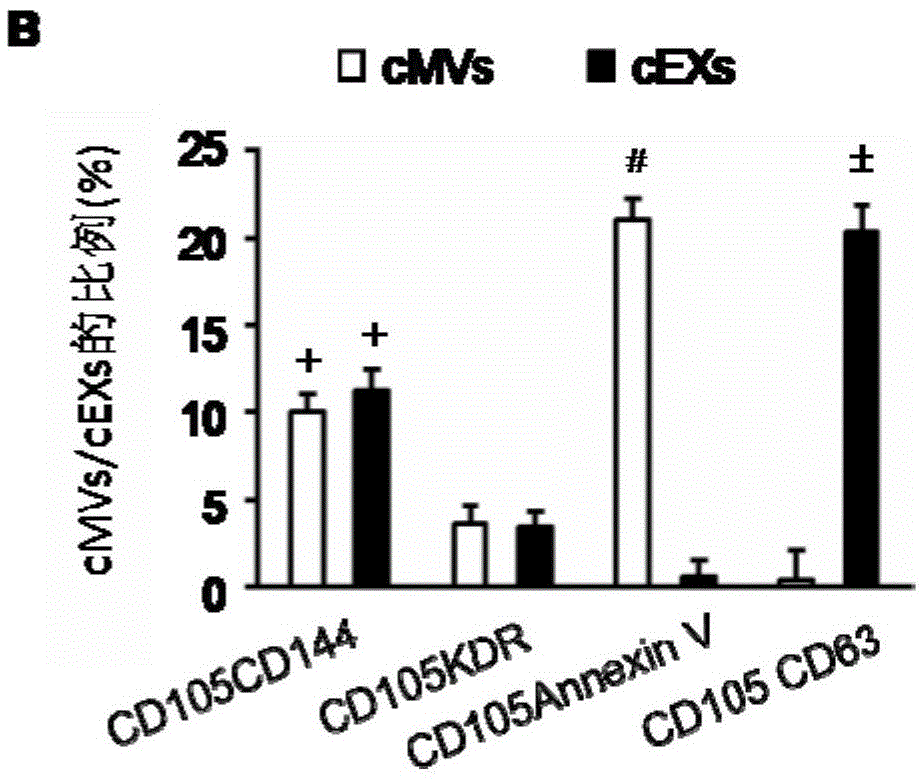Method for detecting EVs (extracellular vesicles) released by ECs (endothelial cells) and EPCs (endothelial progenitor cells) in blood
A technology of endothelial progenitor cells and endothelium, which is applied in the field of medical invention and can solve the problem of lack of kits
- Summary
- Abstract
- Description
- Claims
- Application Information
AI Technical Summary
Problems solved by technology
Method used
Image
Examples
Embodiment Construction
[0042] The following is a specific implementation case of this project. The reagents and materials used in the subordinate applications can be obtained through market purchase channels. The pH of the PBS used in the present invention is 7.2.
[0043] The process of the present invention is as Figure 4 As shown, take 3ml of peripheral blood and put it in a 2ml sterile tube containing 3.3% sodium citrate by mass; add 6ml of filtered PBS; centrifuge after mixing, separation conditions: speed 400r / s, 35min, 4 ℃; take the top layer of liquid is plasma; take 1ml of plasma for centrifugal separation, separation conditions: speed 2000r / s, 20min, 4℃, used to remove platelets; take the supernatant for centrifugal separation, separation conditions: speed 20000r / s, 120min, 4℃, the obtained precipitate was suspended in 700μl filtered PBS as NTA to analyze the total number of cMVs; the remaining supernatant was centrifuged, and the separation condition: 169000r / s, 6h, 4℃, the obtained preci...
PUM
 Login to View More
Login to View More Abstract
Description
Claims
Application Information
 Login to View More
Login to View More - R&D
- Intellectual Property
- Life Sciences
- Materials
- Tech Scout
- Unparalleled Data Quality
- Higher Quality Content
- 60% Fewer Hallucinations
Browse by: Latest US Patents, China's latest patents, Technical Efficacy Thesaurus, Application Domain, Technology Topic, Popular Technical Reports.
© 2025 PatSnap. All rights reserved.Legal|Privacy policy|Modern Slavery Act Transparency Statement|Sitemap|About US| Contact US: help@patsnap.com



